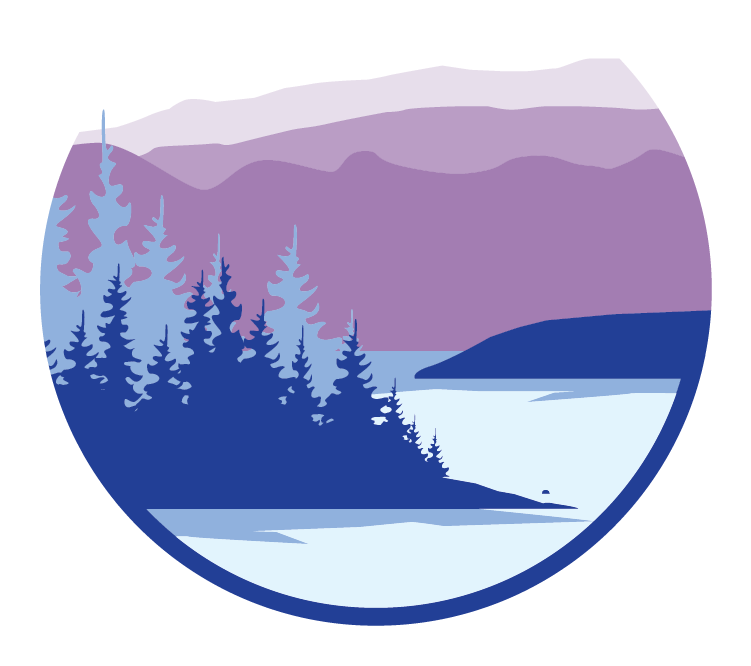A Cool Dip
For as long as I remember, I've always relished taking a dip into the cool, and what many people would consider downright cold, lake waters of Western Montana. Notice I use the term "dip" as opposed to "swim". Actually, I've derived my own, unscientific, terminology for immersing oneself into a lake. the 35-55 degree range is a "plunge", the lower part of this spectrum being considered a "polar plunge". 55-65 I consider a "dip", the upper reaches of which may involve a few brief strokes out and back. And then finally a "swim: is from 65 and up. I suppose if, heaven forbid, there was ever water temperatures exceeding 85 it would become more of a "soak".
Reaching the prize at the end of a hot summer hike to a mountain lake never seems complete without the reward of immersing oneself in the pristine liquid that awaits. Refreshing for certain, to the point of stimulating actually. Worn out, sweaty and relishing the hike back, I always emerge from a plunge grinning and rejuvenated. Life is good!. In fact, I've theorized that a cool lake dive makes one feel 10% younger. Of course 10% doesn't benefit youngsters much (I doubt many 20 year olds care about feeling 18 again, but hey, I certainly relish feeling 59 again.
So why did my rejuvenation soon turn to melancholy when I was able to take a 62 degree dip in Flathead Lake in early May? It was too darn early! Like the many alpine lake in our surrounding mountains, Flathead too can be considered an alpine lake. Fed by snowfield and glaciers from an immense watershed largely comprised of Glacier National Park and designated Wilderness areas, its only natural to take its cold, pristine waters for granted. But dipping conditions the beginning of May?!
It's quite intuitive that water clarity and coldness go hand-in-hand. Without a deep dive into the very complicated and yet to be fully understood dynamics of lake water temperatures, suffice it to say for now that warmer water temps can present many deleterious effects including
Reduced dissolved oxygen which is essential for fish and other aquatic organisms.
An increased likelihood of algal blooms including harmful cyanobacteria (blue-green algae) that can produce cyanotoxins harmful to humans, pets, and wildlife.
Increased solubility of metals, certain toxins and other pollutants in water making them more harmful
Chris Stark, a staff scientist for CSKT's legal department, added som light to a couple more threats involving invasive species; Warmer waters for even just a short period during the year can cause disruption of fish habitats, spawning behaviors, and overall population dynamics, potentially leading to shifts in fish communities and reduced biodiversity. For instance, Bull and Cutthroat trout need cold water with higher amounts of dissolved oxygen as opposed to the invasive, and very competitive, Smallmouth Bass and Northern Pike, also in our lake that flourish in warmer less oxygenated waters. And then there's the invasive weeds, which are more likely to propagate in warmer water and can have major impact on fish populations by not only creating different habitat conducive to other species, but further depleting dissolved oxygen levels due to the seasonal decay of excessive vegetation. This habitat change can happen very quickly with the end game being eutrophication and aquatic dead-zones.
My nagging concern for the welfare of our lake prompted me to reach out to Tyler Tappenbeck at the Flathead Lake Biological Station. He shared a graph compiling the station's lake temperature recordings for the last few decades and, as I feared, the evidence of slowly, but steadily, increasing summer lake temperatures is undeniable. Tyler said that the issue is definitely on the bio station's radar and they are beginning to investigate it further.
Although our lake still meets the criteria of being pristine, there is an ever increasing threat of nutrients and other pollutants entering the waters due to a large increase in human development, not just along our shores, but throughout much of the watershed that fills the lake. Warmer temperatures will only exacerbate the effects of this threat.
As we all enjoy our clean, refreshing lake water this summer, we need to realize that it's not necessarily a self sustaining given which will be there to wash our years away for all eternity. On occasion our lake will lash out with a storm, and certainly demand our attention, but for the most part we should consider it to be a complaisant friend, completely at the mercy of us humans to protect it from the many stealthy threats lingering in it's midst.
Brian Campbell, Flathead Lakers Board Member

